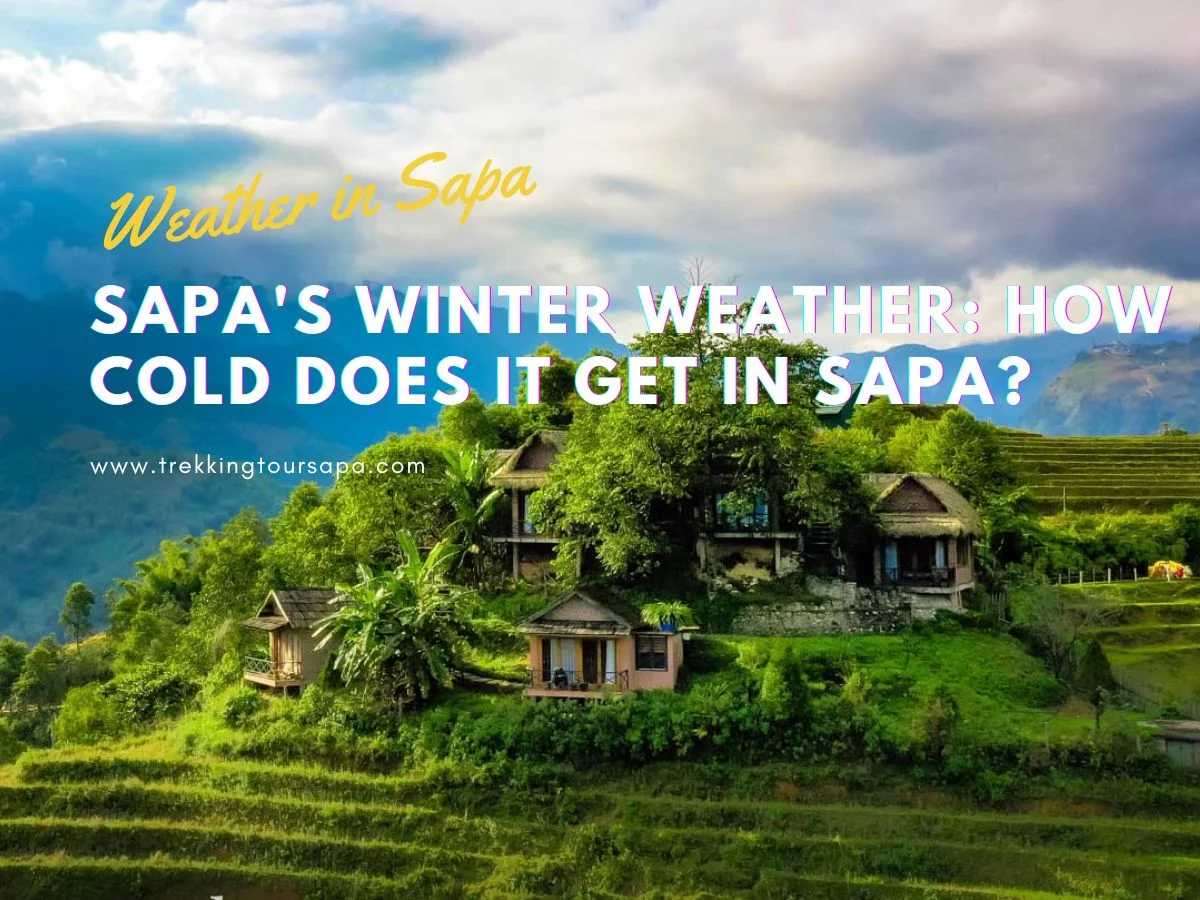Have you ever dreamed of escaping the hustle and bustle of city life, trading it in for a peaceful mountain retreat? If so, Sapa is the perfect place to do just that! Located high up in Vietnam’s Hoang Lien Mountains, this quaint village offers stunning views and an atmosphere unlike any other. But one question lingers on the minds of many travelers: “How cold does it get in Sapa?”
As a freelance writer/journalist who has done extensive research into sapa weather conditions, I can say with confidence that while temperatures vary depending on the season, winters are quite chilly. During winter months (December–February), average lows will drop as low as 7°C (44.6 °F) at night—enough for you to need your coat but not too harsh that you won’t be able to enjoy all that Sapa has to offer.

For those seeking freedom from their everyday routines, Sapa may just provide everything they need. With its breathtaking scenery and comfortable climate during most times of the year, this charming village could be exactly what you’re looking for when planning your next vacation destination. So if you’re curious about how cold it gets in Sapa—don’t worry! Keep reading my article to learn more about the temperature variations throughout each season.
Overview Of Sapa
Sapa is a small mountain town in North-West Vietnam, known for its gorgeous scenery and tourist attractions. The landscape of Sapa has been shaped by the Hoang Lien Son Mountains of the Himalayas, which provide visitors with stunning views and plenty to explore. Hiking trails wind through forests of pine trees, rice terraces dot the hillsides, and several villages offer an insight into rural life in Vietnam. Tourists come from all over the world to take part in trekking adventures or simply relax in the peaceful atmosphere of this charming mountain retreat. With so much to see and do, it’s no wonder why Sapa is such a popular destination for travelers!

The weather in Sapa can vary throughout the year depending on when you visit. In summer months temperatures tend to be milder but can reach up to 30°C during certain days – perfect for outdoor activities like hiking or sightseeing. During winter however it can get quite cold; nighttime temperatures often dip below freezing point and snowfall isn’t uncommon. Average temperature range then becomes an important factor when planning your trip to Sapa…
Weather in Sapa Lao Cai – Average Temperature Range
The winter chill of Sapa is no joke. Nestled in the stunningly beautiful mountainous terrain of northwest Vietnam, Sapa experiences some of the coldest temperatures in the country during its winters. Even on a sunny day, the average temperature rarely creeps above 10°C (50°F). But don’t let that discourage you! With layers and plenty of hot tea or coffee, there’s nothing stopping anyone from exploring this region and taking in all it has to offer.

Sapa enjoys a temperate climate year-round with warm summers and cool winters. The range of average temperatures for any given month can vary greatly depending on elevation and proximity to mountain peaks. In general, though, most months have an average low of around 8°C (46°F) and an average high between 15–20°C (60–68°F). During the summertime, temperatures can reach as high as 25°C (77°F), making it perfect for outdoor activities like hiking or trekking through rice paddies or walking along ancient pathways.
Sapa 1 Day Tours
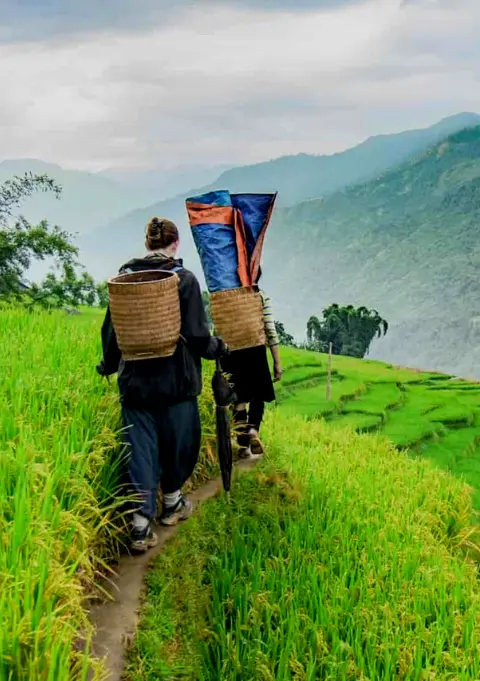
- 1 day experience
- Moderate to challenging
- Cultural immersion & active adventure
- Rice fields, valleys & villages
- Private tours
- Vegan-friendly
Sapa 2 Day Tours
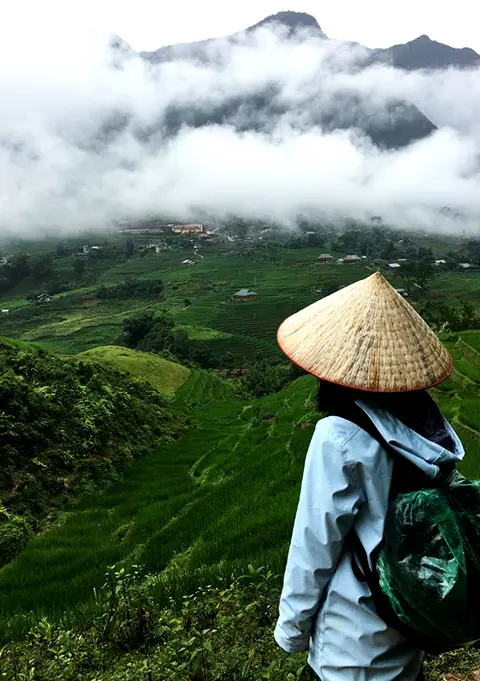
- 2 days 1 night experience
- Moderate to challenging
- Cultural immersion & active adventure
- Mountains, valleys, rice fields and villages
- Private tours
- Vegan-friendly
Sapa 3 Day Tours
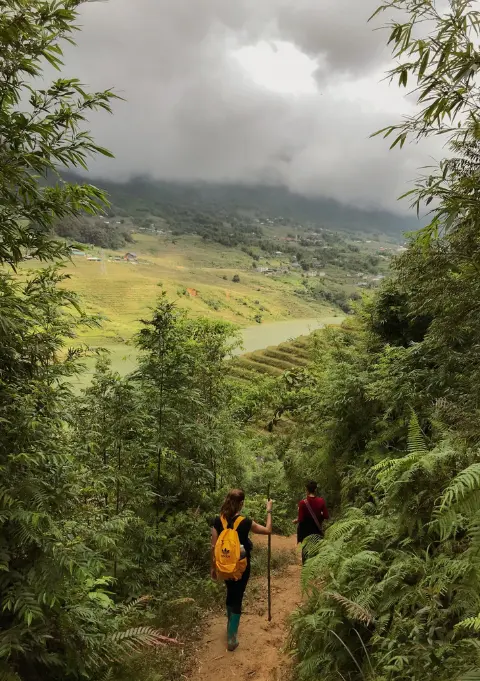
- 3 days 2 night experience
- Moderate to challenging
- Cultural immersion & active adventure
- Mountains, valley, rice fields & villages
- Private tours
- Vegan-friendly
Sapa 4 Day Tours
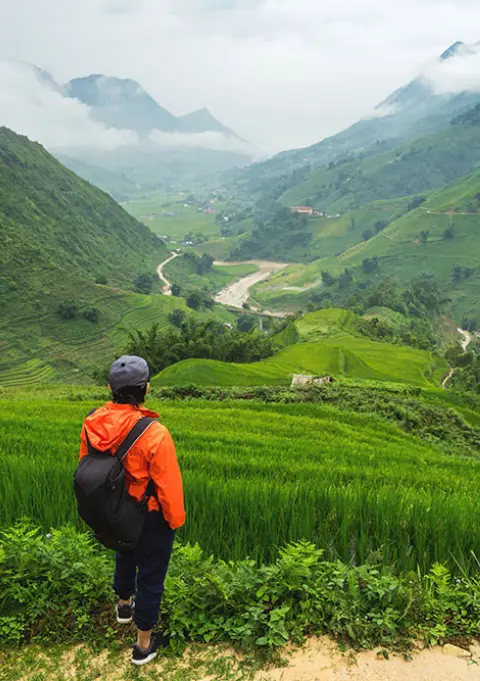
- 4 days 3 night experience
- Moderate to challenging
- Cultural immersion & active adventure
- Mountains, valleys, rice fields & villages
- Private tours – Less Touristic
- Vegan-friendly
In the depths of winter, however, temperatures drop significantly. Sapa weather in October through early March, average highs may only be around 9–10°C (48–50°F), while lows dip down into single digits—sometimes even below zero! As such, those planning trips to Sapa during these colder months should pack accordingly: lots of layers and hats/gloves are essential items when venturing out into low temperatures like these.
With so much variation throughout the year in terms of weather patterns, understanding what type of temperature to expect by season is key when visiting Sapa.
Table of Contents
ToggleTemperature By Season
Sapa, Vietnam is known for its picturesque mountainous landscape and diverse seasonal weather. As the seasons change, so does the temperature in Sapa. Here’s a look at what to expect when visiting this beautiful part of Southeast Asia:
- Spring Weather: From March through May, temperatures are usually mild during the day with some rain showers scattered throughout the season. The average high temperature ranges between 18°C (64°F) and 22°C (72°F). At night, things cool off significantly as lows dip into single digits or even below 0°C (32°F).
- Summer Weather: During June through August, Sapa experiences warm days but nights can still get chilly. Highs range from 19°C (66°F) to 25°C (77°F), while lows hover around 10-14 °C (50-57 °F). This period often sees more rainfall than other months of the year due to the monsoon season occurring from July to September.
- Winter Weather: December through February is considered wintertime in Sapa and brings some of the coldest temperatures of the year. Daytime highs generally remain above freezing—around 7–10 °C (45–50 °F)—while overnight lows frequently drop down to -4 °C (25 °F) or lower.
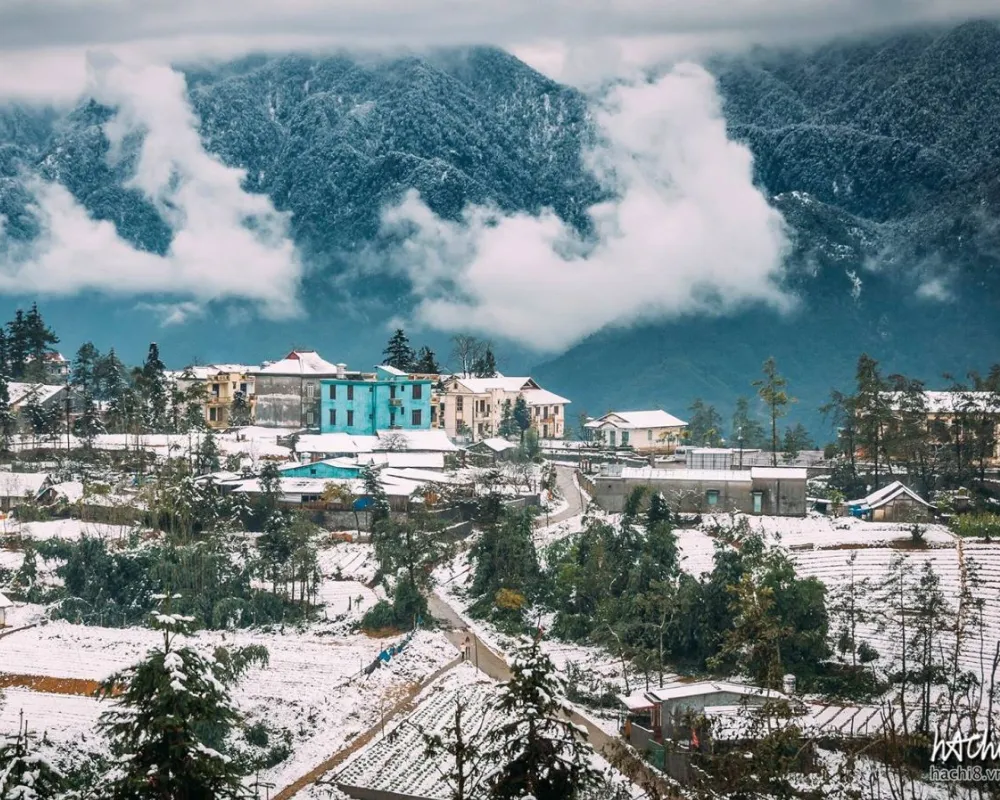
The changing temperatures create an ever-evolving atmosphere that offers visitors a unique experience each time they visit Sapa—no matter what time of year it may be! Next up we’ll take a look at record-low temperatures experienced in this area over the years…
Record Low Temperatures
As the saying goes, “It’s always colder at night!” This certainly applies to Sapa, Vietnam, where temperatures can drop drastically during certain times of the year. With an elevation of around 1,500 meters above sea level and surrounded by mountains on all sides, it’s no surprise that Sapa experiences some extremely cold days throughout the year. In this subsequent section, we’ll look at what constitutes a record-low temperature in Sapa and how often those sub-zero temperatures occur.
Sapa 1 Day Tours

- 1 day experience
- Moderate to challenging
- Cultural immersion & active adventure
- Rice fields, valleys & villages
- Private tours
- Vegan-friendly
Sapa 2 Day Tours

- 2 days 1 night experience
- Moderate to challenging
- Cultural immersion & active adventure
- Mountains, valleys, rice fields and villages
- Private tours
- Vegan-friendly
Sapa 3 Day Tours

- 3 days 2 night experience
- Moderate to challenging
- Cultural immersion & active adventure
- Mountains, valley, rice fields & villages
- Private tours
- Vegan-friendly
Sapa 4 Day Tours

- 4 days 3 night experience
- Moderate to challenging
- Cultural immersion & active adventure
- Mountains, valleys, rice fields & villages
- Private tours – Less Touristic
- Vegan-friendly
Winter is the time when temperatures start to dip in Sapa. On average, winter lows reach 4°C (39°F). But there have been occasions when these extreme weather conditions produced much lower results. The coldest day ever recorded in accuweather Sapa was 21 January 2016 with a low temperature of -4°C (25°F). That’s quite close to freezing! Fortunately for locals and tourists alike, such extreme cold does not happen very frequently; however it still pays to be prepared if you’re visiting during the winter months.
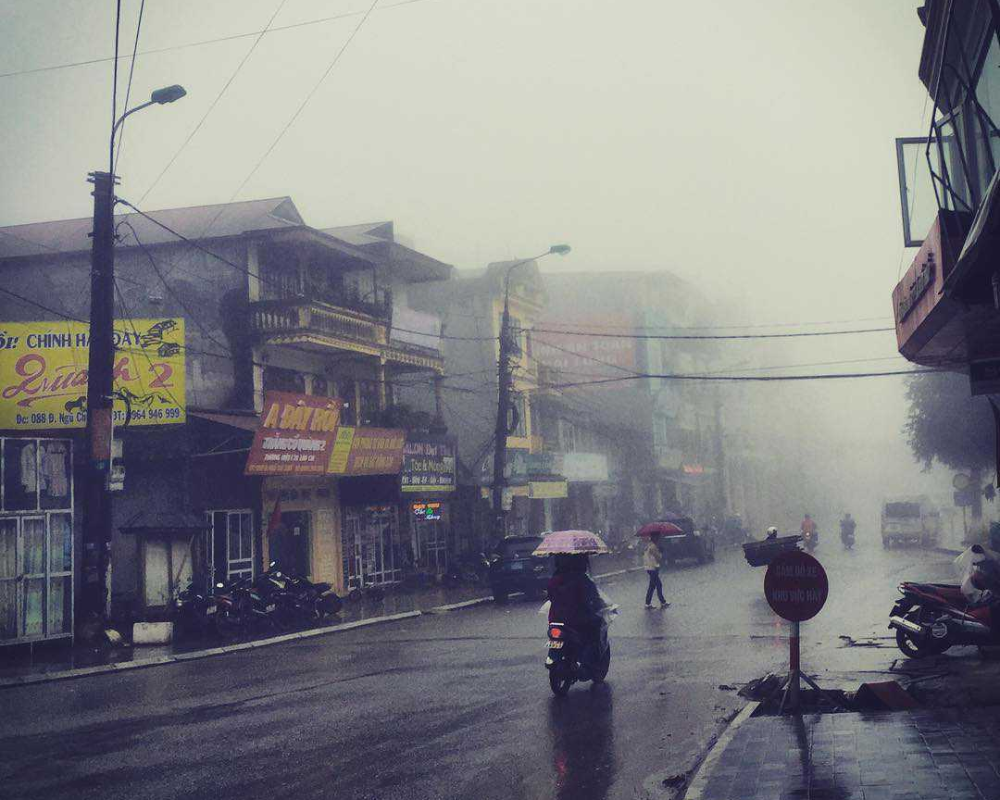
Another factor contributing to the chilly temps in Sapa is its relatively high altitude compared to other parts of Vietnam. As air pressure decreases with increasing elevation so too does the temperature — resulting in much cooler nights than cities located further away from mountain regions like Hanoi or Ho Chi Minh City. Though exposed terrain may make it easier for winds to carry cool air into town and contribute additional chilliness during the evening hours.
Overall, while it doesn’t get as cold as places like Alaska or Siberia, visitors should pack smartly if they plan on taking a trip up north to Sapa — especially during wintertime when one never knows just how far below zero temperatures might go! Now let’s explore how elevation affects temperature even further…
Impact Of Elevation On Temperature
Sapa is known for its dramatic landscape, which includes high elevation and a range of temperatures. The elevation of Sapa ranges from 1,000 to 3,200 meters above sea level, with an average of 1,600 meters. This has a big impact on the temperatures in this picturesque region.
The highest elevations usually experience the coldest temperatures due to their distance from the sun’s rays. During the winter months, nighttime lows can reach -4°C (24°F), while daytime highs are typically around 10°C (50°F). Meanwhile, lower elevations may get as warm as 25-30°C (77-86°F) during summer days. As such, visitors should prepare accordingly depending on when they plan to visit Sapa.
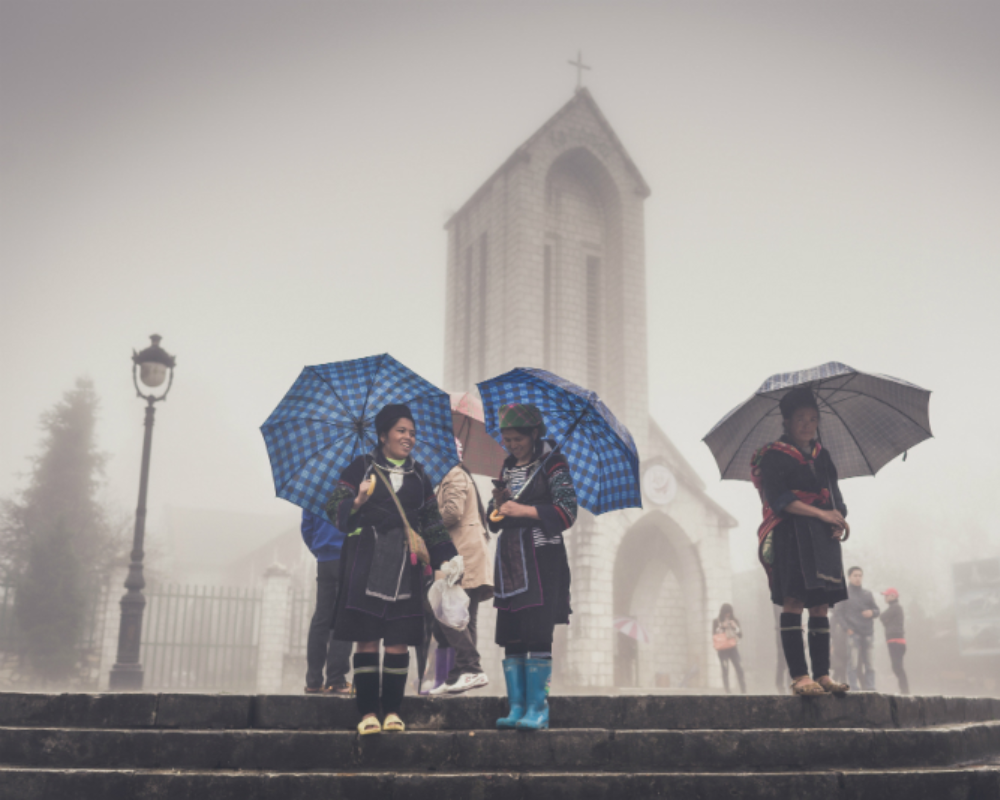
In addition, it’s worth noting that certain areas at higher altitudes tend to have more extreme weather than others. For instance, some areas may be windier or drier than other parts of Sapa. It’s important to consider these factors when deciding what type of clothing and gear you need for your trip. With proper preparation and knowledge about how elevation affects the temperature in this area, anyone can enjoy all that Sapa has to offer no matter when they choose to visit!
It best Time Of Year To Visit Sapa
Sapa’s climate is one of the extremes. On the one hand, it can be incredibly hot and humid during the summer months; on the other, temperatures drop to bitterly cold levels in wintertime. This makes finding the best time for visiting Sapa a tricky endeavor. But don’t let this deter you – with a little knowledge, you can make sure your holiday season trip is both comfortable and enjoyable!
| To help travelers plan their visits more effectively, here are some tips on when to go: | Months |
|---|---|
| March-May | 10° – 20° |
| June-August | 15° – 25° |
| September-November | 10° – 18° |
| December-February | 0° – 10 °(sometimes reaching below zero) |
As expected from its elevation in northern Vietnam’s mountainous region, Sapa experiences cold winters that include snowfall at higher elevations. Winter months tend to bring chilly weather and low visibility due to fog or mist so if extreme cold isn’t your thing then it might be better to visit between March and November. During these times, days will usually remain sunny with mild temperatures perfect for outdoor activities like trekking, exploring rice terraces, or simply taking in stunning views.

For those looking for an even warmer experience, June through August offer long stretches of sunshine ideal for visitors wanting to take advantage of all Sapa has to offer without freezing temperatures getting in the way. With average temperatures ranging from 15–25 degrees Celsius during this period, it’s worth considering as part of your travel plans!
It doesn’t matter what time of year you choose – by following these simple tips and packing accordingly no matter what temperature range you’ll encounter while visiting Sapa, you’re sure to have a great time full of adventure and exploration!
Frequently Asked Questions
What Type Of Clothing Should I Wear When I Visit Sapa in Vietnam?
When planning a visit to Sapa, Vietnam it is important to consider the cold-weather clothing you will need. With temperatures ranging between 0°C and 15°C during winter months, packing the right clothes is essential for ensuring your comfort. To keep warm in this cold climate, waterproof outdoor apparel such as jackets and pants are recommended. You may also want to bring some thermal wear or extra layers of clothing when visiting Sapa which can help provide insulation from the chill. In addition to appropriate outerwear, make sure that you also have suitable footwear like boots or shoes with good grip and traction on slippery surfaces due to potential rain or snowfall in the area at certain times of the year.
Best Assistant For Your Trek
In terms of other items for your trip, think about bringing a hat and gloves along too, as well as any additional accessories you might need for colder climates such as scarves or earmuffs. If you plan on doing activities outdoors like trekking then be sure to bring an extra pair of socks since wet feet are very common in these areas during winter. Additionally, don’t forget sunscreen if you’re traveling to Sapa during summertime! Lastly, remember that dressing appropriately isn’t just about staying warm; it’s also about looking great while exploring one of Vietnam’s most beautiful regions!
No matter what time of year you decide to travel there, having adequate protection against the elements should always be part of your Sapa itinerary so that you can enjoy every moment without worrying about being uncomfortable or underdressed. By preparing ahead of time with appropriate cold weather attire, you’ll have everything needed for experiencing all that this stunning region has to offer – no matter how much or how little the sun shines down!
Is There Any Rainfall Expected During My Visit?
Are you planning to visit Sapa and wondering if there will be any rainfall during your stay? Rainfall is an important factor when considering a trip, and it’s good to have an accurate forecast. Fortunately, researching the weather patterns for Sapa can help provide insight into what kind of rainfalls are likely to occur during your time in this beautiful mountainous region.
Sapa has a distinct climate compared to other parts of Vietnam with high levels of precipitation from May to November each year. The amount of rainfall varies considerably based on the season, but generally speaking, temperatures remain fairly mild throughout the year. According to recent forecasts, however, the months between August and October tend to bring more frequent showers and thunderstorms than other times of the year. As such, visitors should plan accordingly by packing appropriate clothing and supplies that can withstand wet weather conditions.
Sapa 1 Day Tours

- 1 day experience
- Moderate to challenging
- Cultural immersion & active adventure
- Rice fields, valleys & villages
- Private tours
- Vegan-friendly
Sapa 2 Day Tours

- 2 days 1 night experience
- Moderate to challenging
- Cultural immersion & active adventure
- Mountains, valleys, rice fields and villages
- Private tours
- Vegan-friendly
Sapa 3 Day Tours

- 3 days 2 night experience
- Moderate to challenging
- Cultural immersion & active adventure
- Mountains, valley, rice fields & villages
- Private tours
- Vegan-friendly
Sapa 4 Day Tours

- 4 days 3 night experience
- Moderate to challenging
- Cultural immersion & active adventure
- Mountains, valleys, rice fields & villages
- Private tours – Less Touristic
- Vegan-friendly
When researching the rainfall forecast for Sapa, there are several useful resources available online. You can check out local news outlets or websites dedicated specifically to providing detailed information about regional weather patterns. Additionally, many apps offer daily updates regarding current precipitation amounts as well as predictions for future days so that you can better prepare yourself for whatever Mother Nature throws at you during your vacation!
Overall, it pays off to do some research ahead of your trip to get an idea of what type of precipitation may occur while visiting Sapa. Not only does this give you peace of mind knowing that you’re adequately prepared no matter what comes your way – it also gives you a chance to explore this breathtaking area without feeling like you need to worry about getting caught out in the rain unexpectedly!
Are There Any Activities I Should Plan For During My Stay?
Are there any activities I should plan for during my stay in Sapa? Absolutely! This stunning Vietnamese city offers something for everyone – from outdoor enthusiasts to culture seekers. With plenty of options, it’s easy to find exciting things to do here on your next vacation.
For those who love the outdoors, Sapa has plenty of hiking and biking trails that wind through its lush hills and valleys. There are also homestays available if you want a more immersive experience in nature. Whether you’re looking for an adrenaline-filled adventure or just some peaceful time with breathtaking views, this is the place to be.
Sapa 1 Day Tours

- 1 day experience
- Moderate to challenging
- Cultural immersion & active adventure
- Rice fields, valleys & villages
- Private tours
- Vegan-friendly
Sapa 2 Day Tours

- 2 days 1 night experience
- Moderate to challenging
- Cultural immersion & active adventure
- Mountains, valleys, rice fields and villages
- Private tours
- Vegan-friendly
Sapa 3 Day Tours

- 3 days 2 night experience
- Moderate to challenging
- Cultural immersion & active adventure
- Mountains, valley, rice fields & villages
- Private tours
- Vegan-friendly
Sapa 4 Day Tours

- 4 days 3 night experience
- Moderate to challenging
- Cultural immersion & active adventure
- Mountains, valleys, rice fields & villages
- Private tours – Less Touristic
- Vegan-friendly
If you’re interested in learning about local customs and traditions, then visiting one of Sapa’s bustling night markets is a must. Here, you can browse handmade items crafted by locals as well as enjoy traditional dishes and drinks unique to the region. Don’t forget to bring back souvenirs to share with friends at home too!
No matter what kind of activity you choose while visiting Sapa, make sure you take some time to appreciate all that this vibrant area has to offer. From exploring picturesque landscapes to experiencing the warm hospitality of the locals, there’s never a dull moment here in northern Vietnam.
What Type Of Food Is Available When Planning A Trip To Sapa?
Ah, Sapa. A traveler’s dream come true! With the breathtaking scenery and temperate climate, there is much to explore and experience in this beautiful Vietnamese town. But what about food? Well, let me tell you – it doesn’t get any tastier than traditional dishes from the street vendors of Sapa!
When visiting Sapa, one can expect to find a wide variety of ethnic foods available throughout the city. From local cuisine to seasonal produce, all tastes are catered for with an array of delicious flavors that will tantalize your taste buds. Street food is also popular here; ranging from noodle soups to barbecued meats – there’s something for everyone!
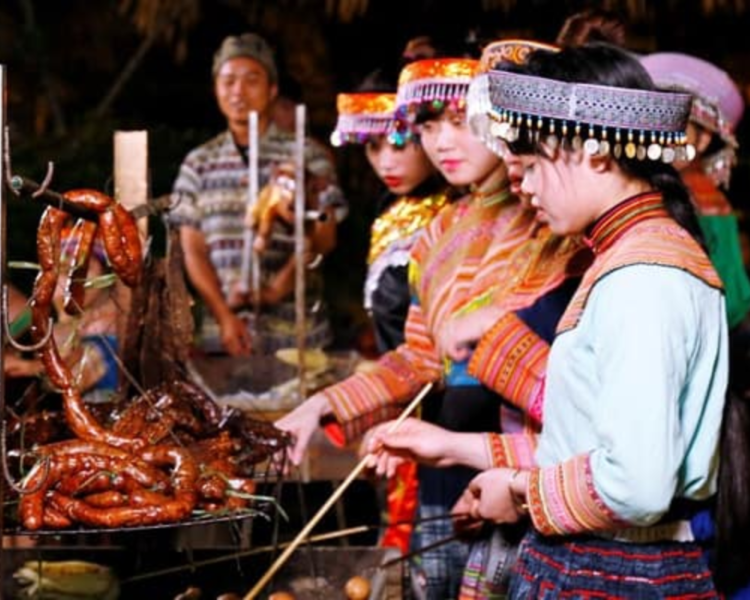
For those seeking more adventurous fare, look no further than traditional dishes like Pho or Bun Cha Ha Noi. These delightful meals feature fresh ingredients cooked over an open flame to bring out their full flavor. Plus, since many recipes have been passed down through generations, you’ll be sure to enjoy a truly authentic culinary experience when dining in Sapa! And if that wasn’t enough to make your mouth water – don’t forget about the amazing selection of desserts too!
If you’re looking for flavorful yet affordable eats during your stay in Sapa, then worry not: a wide range of options awaits you around every corner! So go ahead and indulge yourself with some incredible local delicacies – you won’t regret it!
Are There Any Special Health Precautions I Should Take When Visiting Sapa?
When planning a visit to Sapa, it is important to consider any special health precautions you may need. The cold weather in the area can present some unique challenges and visitors should make sure they are aware of these before heading off on their travels.
It is always recommended that travelers take extra care when visiting somewhere new, but there are a few key points to consider when visiting Sapa. These include:
- Checking with your doctor or pharmacist about travel health advice for Vietnam
- Taking appropriate clothing for the colder temperatures (layers work best)
- Ensuring you have adequate protection from the sun
- Researching local customs and traditions
- Making sure all relevant vaccinations are up-to-date

Knowing what sort of health risks might be encountered during your trip can help you prepare accordingly so you can make the most of your time in Sapa without having to worry too much about potential hazards. It’s also worth researching other aspects of travel safety such as transport options, food hygiene standards, and possible dangers like crime or natural disasters. This way, you can ensure that your stay in Sapa is an enjoyable one!
Being mindful of how the temperature drops at night and ensuring you pack appropriately will go a long way toward making sure your Sapa visit goes smoothly. With this knowledge in hand, plus taking into account relevant health considerations, travelers can set out feeling better prepared for whatever surprises await them!
Conclusion
The cold of Sapa can be quite daunting. It’s like an icy embrace that wraps around you and forces you to prepare for the worst. But don’t let it deter you from visiting this beautiful mountain town—it’s worth it!
You should plan and bring appropriate clothing: a coat, gloves, wool hat, scarf, and warm boots are all essential items when traveling to Sapa in winter. Rainfall is common during these months too, so make sure your raincoat is waterproof if possible. Additionally, there are plenty of activities on offer such as trekking through the mountains or exploring one of many ethnic minority villages nearby.
Finally, take care of yourself while in Sapa by eating local food and taking any necessary health precautions – consult with a doctor before your trip if needed. Even though temperatures may dip below zero at night, the memory of tasting hot food cooked over wood fires after a long day spent walking in the valley will stay with you forever – making Sapa truly unforgettable.
Sapa 1 Day Tours

- 1 day experience
- Moderate to challenging
- Cultural immersion & active adventure
- Rice fields, valleys & villages
- Private tours
- Vegan-friendly
Sapa 2 Day Tours

- 2 days 1 night experience
- Moderate to challenging
- Cultural immersion & active adventure
- Mountains, valleys, rice fields and villages
- Private tours
- Vegan-friendly
Sapa 3 Day Tours

- 3 days 2 night experience
- Moderate to challenging
- Cultural immersion & active adventure
- Mountains, valley, rice fields & villages
- Private tours
- Vegan-friendly
Sapa 4 Day Tours

- 4 days 3 night experience
- Moderate to challenging
- Cultural immersion & active adventure
- Mountains, valleys, rice fields & villages
- Private tours – Less Touristic
- Vegan-friendly
